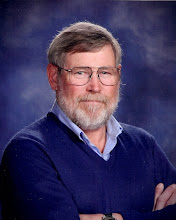The
Duwamish Head race is the second race of the four race South Sound Series. This race is 30.6
nm and starts off the Des
Moines fishing pier, runs north to the
Duwamish Head
navaid, then west around
Blakley Rocks off Bainbridge Island and south to finish off Des
Moines. This race has been advertised as the first race of the New Year.
I got underway on Friday at 0743 for the delivery to Des
Moines. The winds were light and the morning cool. Rain was forecast for the entire weekend, but did not start until just before I moored at the Des
Moines marina. Then it rained heavily most of the rest of the day and night. I arrived at about 1100. I like getting there early. I had the pick of the
moorage and the day was spent socializing with a lot of characters that I have known for many years. By nightfall, there were three boats rafted outboard of me. I had a pleasant night
onboard with the
Webasto furnace keeping it warm inside and the rain pounding on the deck outside.
Saturday morning was calm and when the sun came up, the sky was clear, the rain had passed. After a good breakfast sponsored by Des
Moines Yacht Club, we got underway to the starting area. The winds were forecast for south around 10knots, but they were calm. The
committee postponed for nearly two hours
until a light northerly filled in.
The starting line was really skewed which made it hard to cross on starboard. I ran down the line toward the dock end on port dodging starboard boats looking for a hole and finally tacked to starboard with about 30 seconds to go and had a great start. Some boats were over early down at the pin end. Soon after the start, we started getting into the bad air of
Liberte(C&C115) and
Zorra(C&C115). They were pointing really high, so we cracked off a little and were able to get our speed up enough to dive through their lee and end up ahead. As we approached the mid channel, the wind swung left and we first tacked and then set the
spinnaker. The
spinnaker stayed up the rest of the race. We stayed in the middle of the sound looking for better ebb current.
Just past Three Tree Point, the boats that went toward shore initially looked like they were running out of wind, but by Fauntleroy the wind started filling and for the east boats it came first. Flashback(J35) jumped out in the lead followed by
Liberte,
Absolutly(G&S 39) and Intuition(a very well sailed C&C 37/40XL). Grace E(J35) came out from the shore and got by us on the left. As we closed on
Alki Point we closed on Fast Feather II(J35). The wind was around 10 knots at
Alki Point and the boats started bunching up. The reach from
Alki to
Duwamish head is always a bit tricky. Grace E and Fast Feather went low after
Alki and started luffing each other. We stayed high and got by Fast Feather but could not catch Grace E.
As we neared
Duwamish Head, we could see that the race was being shortened there. We finished at about 1618. We ended up 8
th out of 16 finishers. I was happy with the results. Like so many of these races, it takes a lot of luck as well as never giving up to do well. We worked the boat hard and as always learned more about this course. When you do these races over and over again, you can started noticing trends in the conditions. There are no hard and
fast "rules" about how to races these races.
After we finished, we transferred Peg to Fast Feather for a ride back to Des
Moines and took Kathleen to Bell Harbor marina. She lives in Seattle and took a bus home. We then motored back to Brownsville. The evening and sundown was spectacular and warm. We had one strange
occurrence off the Manchester Navy Fuel Depot at the entrance of Rich Passage. The autopilot started misbehaving and I was getting strange error messages on it. I wonder if there was some transmissions from the ship there interfering with the wireless autopilot remote.
Worked fine after we were past the depot.
I drove Tom to Port Orchard and Jim to Des
Moines to get his car arriving home at 2240.
Our crew of Tom, Jim, Peg and Kathleen did an
outstanding job. Many thanks to them.
Race distance:13.4
nmTotal distance for the weekend: 56.4
nmPreliminary results can be found here(we were in Class D):
http://www.ssseries.org/2010%20Duwamish%20Head%20Preliminary1.pdfPictures by Jan can be found here(we are very hard to see in these pics and I forgot to bring my own camera):
http://www.flickr.com/photos/75869001@N00/sets/72157623185021154/show/
Our course for the day. Pretty straight forward. The location of the jibes can be seen.























